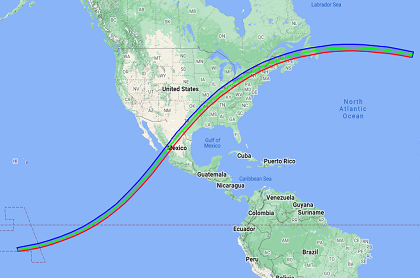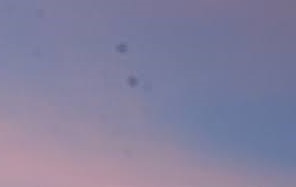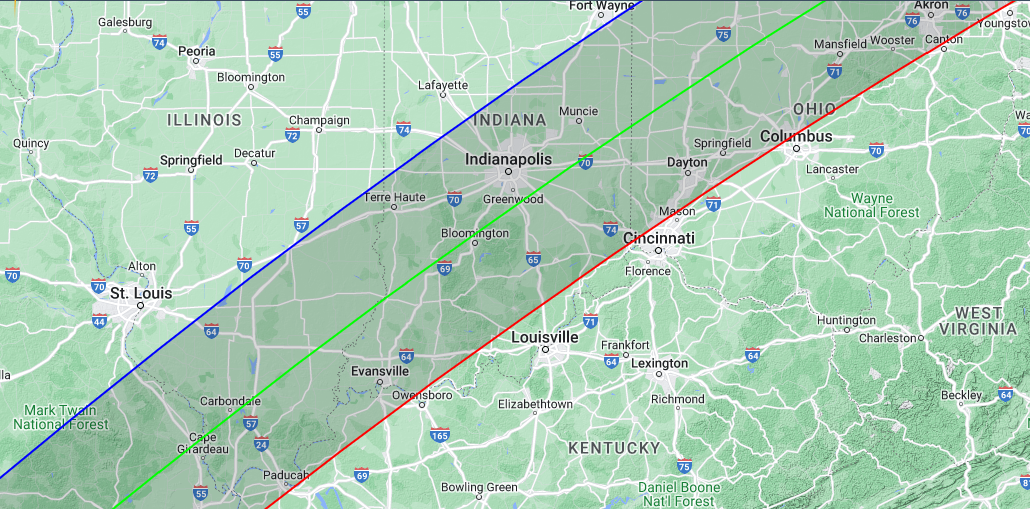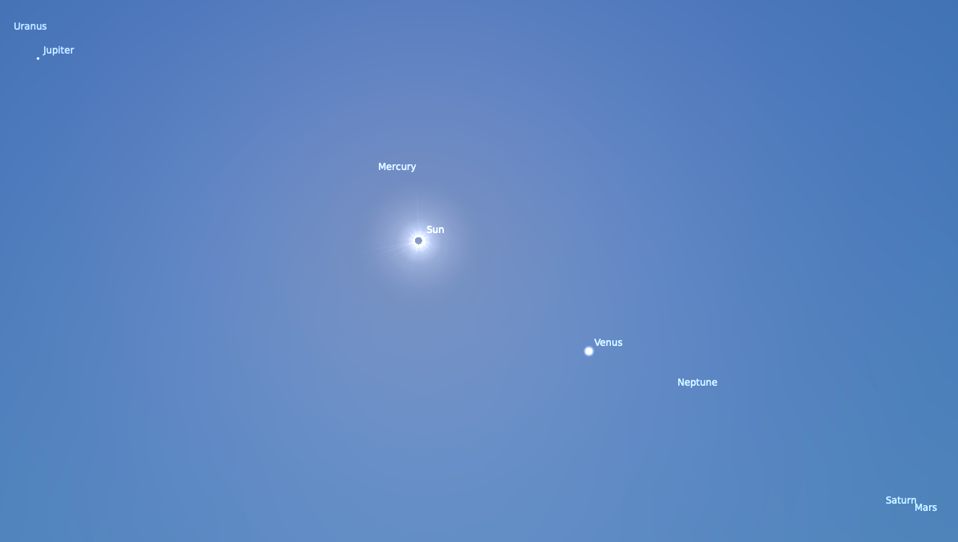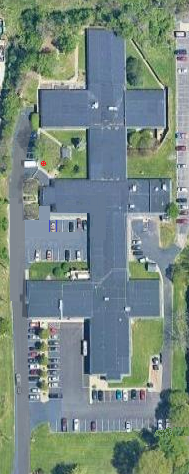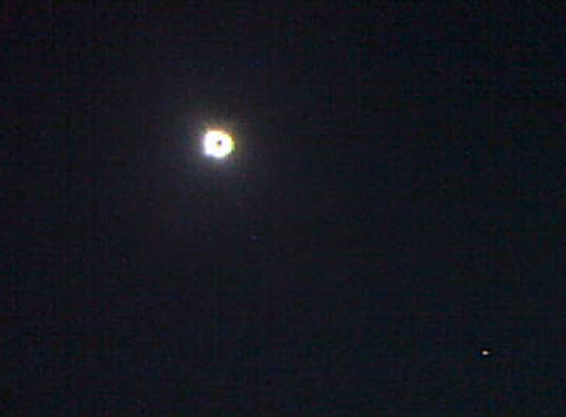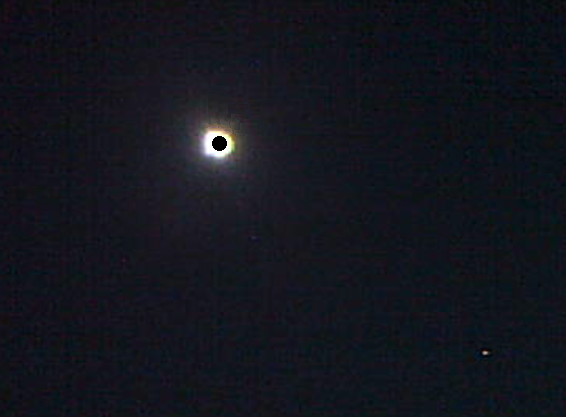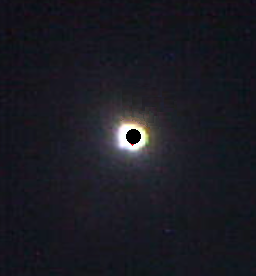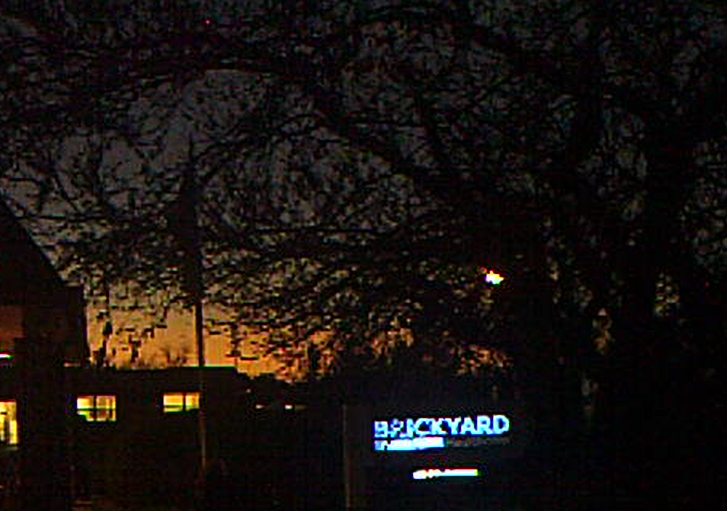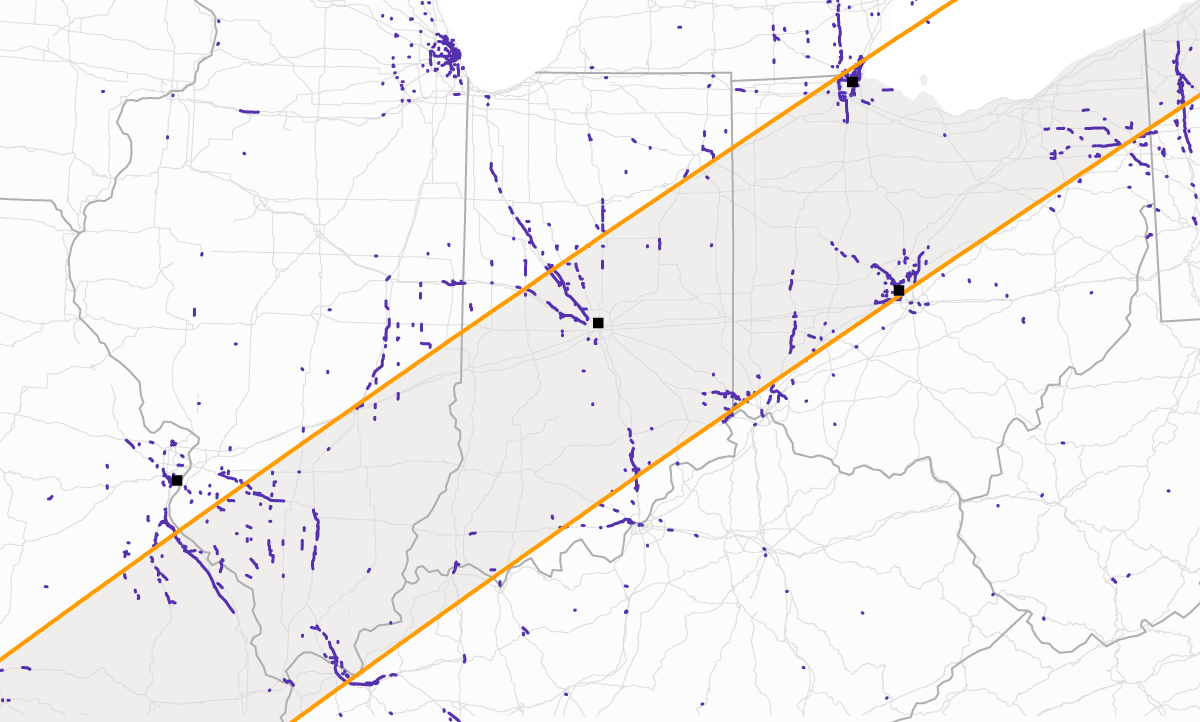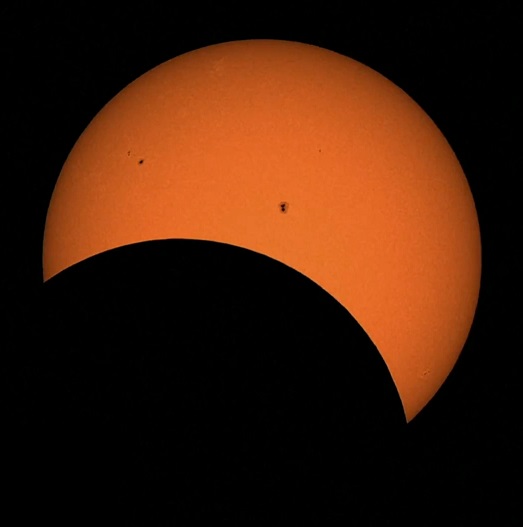NEVER LOOK DIRECTLY AT THE SUN DURING THE PARTIAL ECLIPSE PHASE OR DURING AN ANNULAR ECLIPSE
WITHOUT APPROVED EYE PROTECTION.
- You may look directly at the sun only during totality when the moon completely covers
the sun.
- Looking at the sun at any other time will permanently damage your eyes.
- Looking at the sun through binoculars or a telescope is even more dangerous.
NEVER POINT A CAMERA DIRECTLY AT THE SUN DURING THE PARTIAL PHASE OR AN ANNULAR ECLIPSE.
- You may photograph the sun only during totality when the moon completely covers
the sun.
- Photographing the sun at other times will damage the camera.
- Photo at right was taken after camera was damaged by the sun.
- Placing eclipse glasses over the camera lens will protect the camera. You can photograph
the sun this way.
-The eclipse glasses lens must completely cover the camera lens.
- Safe methods to observe solar eclipses:
- Genuine approved eclipse glasses
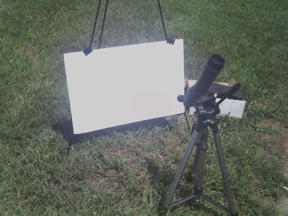
- Arc welder's helmet
- Pinhole projects onto white surface
- Binoculars project onto white surface
- Small telescope projects onto white surface (right)
- Telescope with special solar filter
- It is safe to look at and photograph the solar image projected on the white surface.
- The equipment shown makes an image about 5 inches across on the white surface.
Photos taken with the equipment shown on 08/21/2017 in Hopkinsville KY:
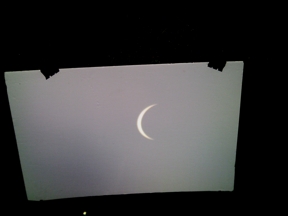 |
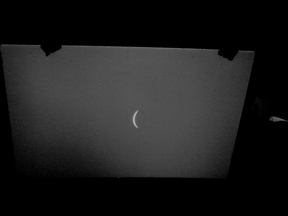 |
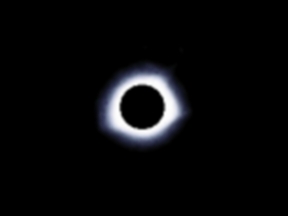 |
| White surface minutes before totality |
White surface just before totality |
Direct to camera during totality |
One thing I wish I had done, I should have brought two tripods - one for the telescope and one for
the camera.
Without a tripod, some of the camera photos were blurry.
- Look for other effects of the eclipse:
- Look for large light and dark patches on the ground during totality. They might move
rapidly, making the sunlight flash bright and dim.
- Look for sunset effects. If there are scattered clouds, some near the edge of totality
may turn bright red.
- The sky often turns a leaden color during totality.
- Stars and planets appear during totality.
- If the sky is totally overcast, there are still eclipse effects such as sunset effects,
shadow bands, and a huge black circle on the clouds.
